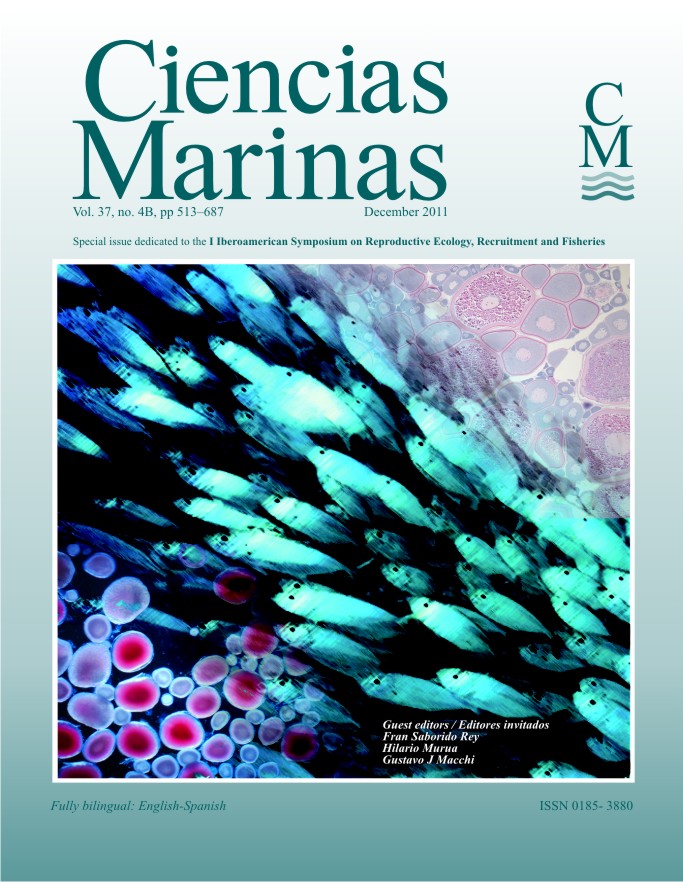Potential egg production, recruitment, and closed fishing season of the Peruvian anchovy (Engraulis ringens): Implications for fisheries management
Main Article Content
Abstract
Recruitment success of commercially important marine resources, such as the Peruvian anchovy Engraulis ringens, is based on continuous assessment and fisheries management. Potential egg production (PEP) is a valuable tool that, unlike the reproductive indices, quantifies spawning activity and increases the likelihood of a better prediction of recruitment. From 2000 to 2008, spawning females >14.0 cm total length contributed largely to the annual PEP (more than 60%), while females ranging from 12.0 to 14.0 cm TL had a significant participation during peak spawning periods. During the main spawning periods, 68% of the total PEP was obtained, with each length group contributing 50% of this production, whereas during the period of low activity, females >14.0 cm were those that kept spawning, contributing 81% of PEP. The breeding-related closed fishing seasons protected 57% of PEP, 22% in summer and 35% in winter-spring; fishery closure is an effective management measure to protect the main reproductive activity. This protection and quantitative knowledge of the spawning of E. ringens, such as that provided by PEP, will help us to better understand the recruitment process and predict recruitment.
Downloads
Article Details
This is an open access article distributed under a Creative Commons Attribution 4.0 License, which allows you to share and adapt the work, as long as you give appropriate credit to the original author(s) and the source, provide a link to the Creative Commons license, and indicate if changes were made. Figures, tables and other elements in the article are included in the article’s CC BY 4.0 license, unless otherwise indicated. The journal title is protected by copyrights and not subject to this license. Full license deed can be viewed here.

